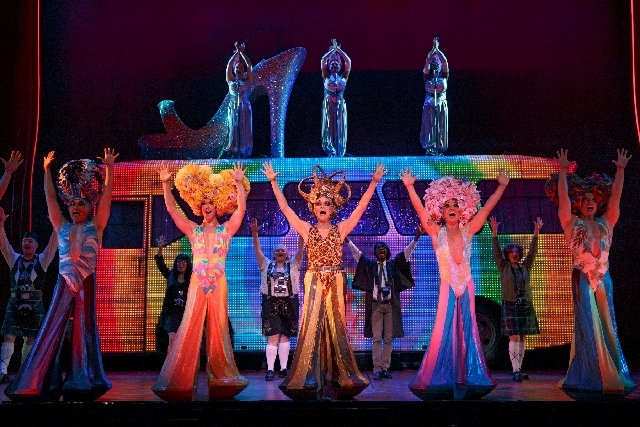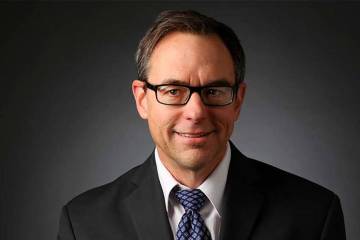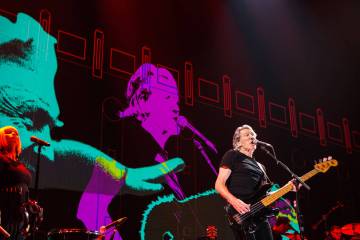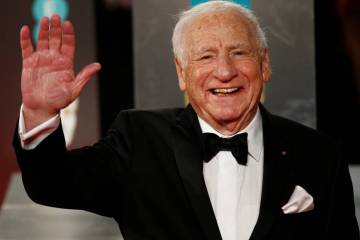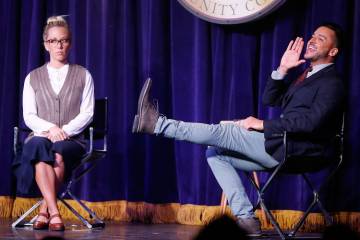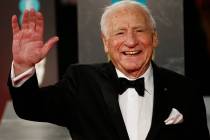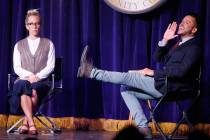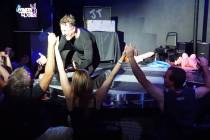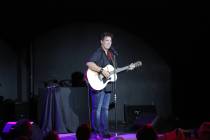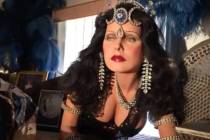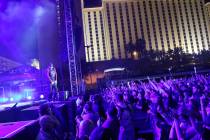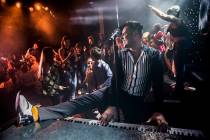Drag is more than a costume
Man wearing dress. Mystic space between heaven and Earth? Or cheap hotel with no ballroom?
The stars of “Priscilla Queen of the Desert” didn’t previously make a career of dressing in drag, but they bring outside perspective on those who do.
“Drag is such an incredible art form, I think it’s really underestimated in its potential. I have deep respect for it,” says Wade McCollum, who in The Venetian’s musical plays the drag performer who leads a quest through the Australian outback.
Frank Marino, Las Vegas’s premier drag diva since 1985, could say “Aw shucks.” Instead, he says, “A drag queen is a person who has too much fashion sense to be just one sex.”
Ba-bump! That’s the rimshot humor we expect in Vegas drag shows such as Marino’s “Divas Las Vegas,” the jokes that fall between the impersonations of Liza Minnelli or Adele.
One plot thread in “Priscilla” is the tension between an older performer of the lip-sync school and a younger one who does his own singing.
It’s been a nonissue on the Strip. Only the short-lived “Dragapella” offered real singing, and it didn’t last long enough for many people to remember.
But “Divas” at The Quad does strike another common thread with “Priscilla.” The one serious part of the show is a dressing-room vignette where a performer removes his makeup and costume, reverting to his male guise to the strains of the Charles Aznavour song “What Makes a Man?”
“The hilarity and the joy always come at a price for the characters, a deeper underlying thing than just a joke,” McCollum says.
“Priscilla” includes “an element of voyerism, because it is a fringe culture, the drag culture,” he adds. “It’s a backstage view of who these people are and what it takes for them to be drag artists in their everyday lives.”
Scott Willis plays the older (and lip-syncing) Bernadette, who in the story has moved beyond drag to become a transsexual. Willis is the only one of the three main characters never seen out of a dress, one reason he figures audiences are more impressed than they are by male roles with equally cumbersome costuming.
“Bernadette’s the first time I’ve done drag, but I certainly had more padding and more hair with Santa than I had with Bernadette,” he says of performing in Radio City Music Hall’s annual Christmas show.
“Women wear pants. They’ve been wearing pants for a long time,” he reminds us. Because his character was a man who wanted to be a woman, she displays “a heightened femininity rather than true femininity.”
That said, “I think a lot of women really do appreciate drag performers, or that somebody wants to emulate that process, or knows the hours it takes to be pretty, even if you’re a pretty woman.”
Marino did draw one dissenting opinion. “I actually did a TV show one time when I had a lesbian yell at me,” he says. “She got mad at me and said drag is just men once again trying to prove they can do something better than a woman. And this time, it’s a man trying to be a woman better than a woman could be.
“I had to look over and say, ‘Honey, you’re putting a little more thought into this than I did.’ ”
If that’s a lot of thought, ponder this.
McCollum says he is intrigued by the concept of “androgyny as kind of a tool to affirm our essential unity. I just love it.
“Transvestism was used widely in shamanic traditions throughout the world, and still is,” he says. In more than one culture, the shamen would “degender themselves physically so they occupy the third space both physically and spiritually, kind of a bridge between genders, a bridge between heaven and Earth. Between the spirit and the material world.”
We always knew we loved “Boy-lesque” or “La Cage.” We just never knew the mascara ran so deep.
Contact reporter Mike Weatherford at mweatherford@
reviewjournal.com or 702-383-0288.



